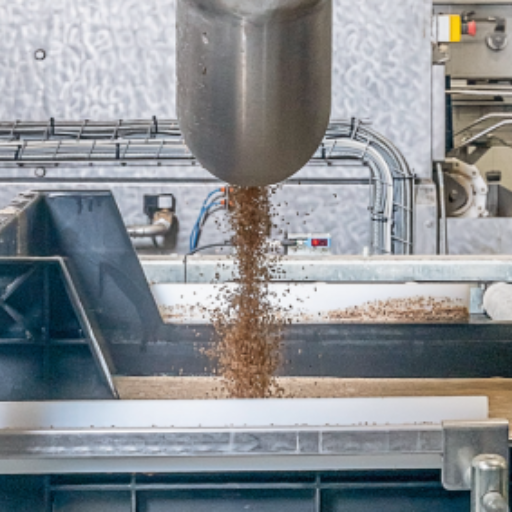Nowadays, Black Soldier Fly (BSF) larvae have become an attractive, sustainable protein source, especially in animal feed and waste management. This article focuses on different ways of effectively drying BSF larvae and presents this resourceful innovation’s nutritional merits. We will look at conventional and new drying techniques to give an overview of some of the things that occur when they are subjected to these processes while considering their nutrient richness. Whether you are a scientist undertaking research, a farmer, or simply interested in other sources of proteins, this comprehensive guide will help you obtain vital information concerning the benefits and logistics of using dried BSF larvae as part of your regime.
What Are Black Soldier Fly Larvae?
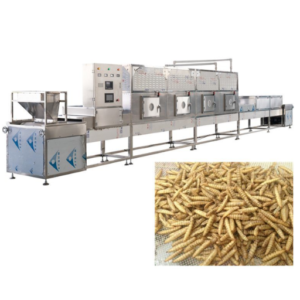
Image source: https://joyangmachine.en.made-in-china.com/
The immature stage of the black soldier fly, known for its fast maturing and flexible nature, is called Black Soldier Fly larvae (Hermetia illucens). They are typically cream-colored and can attain up to 2 inches in length. These organisms decompose efficiently by converting refuse into biomass, which makes them exceptional organic waste feeders. Rich in proteins and essential nutrients, BSF larvae are now considered alternative livestock feeds, fish farming inputs, or even pet food. This not only aids sustainable waste management but also helps in meeting the increasing desire for sustainably sourced protein within various sectors.
Introduction to Black Soldier Fly Larva
Besides being useful for nutrition, black soldier fly larvae (BSFL) also make other ecological contributions. They are very good decomposers that help the organic waste management process by breaking down organic materials to reduce landfill waste and greenhouse gas emissions. Some recent research has demonstrated that these larvae contain 40-50% protein and about 30% fat, making them good animal feed material, especially for aquaculture and poultry production. Cultivating these insects is relatively easy and environmentally friendly since it is resource-efficient compared to conventional animal farming. The growing interest in BSFL can be attributed to increased emphasis on sustainability and food security, which makes them a possible solution for global protein demands as well as the promotion of circular economy approaches.
Life Cycle and Benefits of Using BSF Larva
The life cycle of the Black Soldier Fly (BSF) begins with the adult fly laying eggs in appropriate organic matter. The eggs hatch into larvae, which feed on organic waste for two to three weeks and grow very fast as well. Once they mature, they enter the pupal stage, which marks their metamorphosis before emerging as adult flies to perpetuate the cycle.
There are several advantages associated with using BSF larvae. They convert organic waste into biomass rich in protein and contribute to sustainable agriculture by providing alternative protein sources for animal feeds, thereby reducing reliance on traditional feed ingredients such as soy and fishmeal. The use of Black Soldier Fly larvae in managing wastes helps reduce environmental degradation resulting from issues related to landfills and greenhouse gas emissions. In addition, they require much less land, water, and other resources, unlike conventional animal farming, thus making them a good choice for pro-environmental purposes in today’s protein production landscape.
Applications of Dried Black Soldier Fly Larvae
Dried black soldier fly larvae (BSFL) have many applications in various industries. Their primary use is as a source of proteins in animal feeds, especially poultry, pigs, and aquaculture. Their good digestibility properties and nutritional profiles make them an alternative protein source to traditional ones, thus promoting livestock growth and general wellness.
Dried soldier fly larvae can be used as animal food and pet food. They are also rich in fatty acids, which could enhance skin health and nourish pets’ hair. Further, BSFLs are being considered for human consumption and marketed as snacks or protein supplements since people are becoming more interested in edible insects as sustainable foods. Lastly, such production also plays a vital role in recycling organic waste since it decreases waste volume while producing valuable protein, which promotes circular economy initiatives.
Why Dry Black Soldier Fly Larvae?
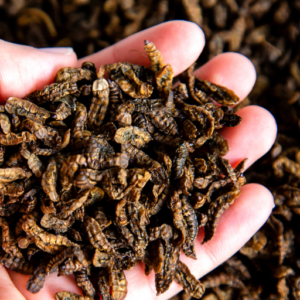
Dried black soldier fly larvae are innovatively addressing protein shortages and waste management challenges. They are an excellent addition to animal nutrition due to their high content of proteins and a balanced amino acid profile that enhances growth and health in livestock. Also, BSFL consumes less land, water, and feeds when compared to traditional livestock, making it the most sustainable way of producing them. They also help mitigate climate change by recycling organic waste and reducing GHG emissions. Dried BSFL can be used in various forms, like animal feed or human snacks, and has a promising future that aims at a more resourceful food system for sustainability.
Benefits of Dried Black Soldier Fly Larvae for Animal Feed
For several reasons, using dried black soldier fly larvae as a protein-rich ingredient in animal feeds is advantageous. First, they contain all the amino acids required to promote proper growth and development in farm animals. Second, they have a high level of fat, which makes them an energy-packed alternative that can improve the feed conversion ratio, thus resulting in more meat and milk production at a low cost. Thirdly, adding organic waste to BSFL enables feeding animals with additional nutrition while at the same time ensuring the environment is kept clean by recycling garbage, among other things that align with sustainability goals. Besides, researches prove that including these insects’ larvae in rations can lead to better gut health and immune responses & well-being and increased productivity overall.
Nutritional Value of Dried Black Soldier Fly Larvae
An excellent ingredient for regular animal and human consumption is dehydrated BSFL. Black soldier fly larvae are known as an alternative to regular food, considering their incredible nutritional profile. Typically, they contain about 40-50% protein, close to other traditional protein sources, such as soybean meal. The protein contains essential amino acids such as leucine, lysine, and methionine that play a significant role in growing up. Furthermore, the fat constitutes about 30-40% of these BSFLs, making it an ideal fat source for them. It is mainly in unsaturated fats, acting as a good energy source. Additionally, they contain vital micro-nutrients such as calcium, phosphorous, and B vitamins, all of which support overall metabolic functions. The growth potential and nutritional benefits of using dried black soldier fly larvae (BSFL) in animal feed formulation are substantial.
Cost-Effectiveness and Storage
Not only is the use of BSFL in animal feed nutritionally beneficial, but it is also an inexpensive way of doing so. Consequently, the production of BSFL needs relatively less input than that used in traditional livestock keeping, such as land and water, which is a more sustainable alternative. The ability to change organic waste into high-protein feed is a way farmers can minimize the cost of feeds. In terms of storage, dried black soldier fly larvae (BSFL) have a shelf life when kept in cool, dry areas, which makes inventory management more accessible and reduces waste. The latter aspect, therefore, makes them ideal for feed manufacturers or farmers who would want to increase their profits while conserving the environment at the same time.
What Are the Key Drying Methods for Black Soldier Fly Larvae?
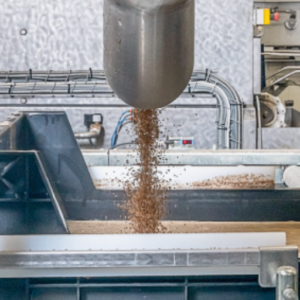
Many drying techniques are usually utilized to keep the nutritional value of Black Soldier Fly Larvae (BSFL) while preserving them. The main methods are:
- Hot Air Drying: Heat is distributed around the larvae, and evaporation occurs quickly. While maintaining the appropriate temperature is necessary to avoid nutrient degradation, this method is quite effective.
- Freeze Drying: Sublimation is used to remove moisture from BSFL by freezing them first and then subjecting them to a vacuum. This method retains more nutrients compared to hot air drying, though it is often more expensive and time-consuming.
- Sun Drying: This process uses solar energy, which is an eco-friendly way of drying that costs less; however, it relies on weather conditions and can lead to variations in drying efficiency.
- Microwave Drying: This approach heats larvae quickly, thanks to microwave radiation, which also helps remove moisture. It’s very fast and efficient, although specialized equipment must be used.
Each approach has its pros and cons, and the choice is mostly based on resource availability, product quality required, and scale of production.
Hot-Air Drying Process
To do this, some essential steps are involved in the hot air drying process of the Black Soldier Fly Larvae (BSFL) to remove moisture while preserving their nutritional content efficiently. The harvested larvae have to be cleaned and pre-processed to eliminate any contaminants. After that, they are put on drying trays so that uniform air can flow all over them. Then, warm air is blown into the trays, usually at controlled temperatures ranging between 50 and 70 degrees Celsius, leading to water vaporization. While going through this procedure, it becomes essential to check the water content of the substance so it does not heat a lot, causing a loss of nutrients. When they come out dry, how long they take depends on their wetness and the number of layers, with around two hours being required to get them completely desiccated. Dry BSFLs can also be stored for more extended periods, thus guaranteeing their viability as animal feed.
Microwave Drying and Its Effects
Conversely, this expedited fashion remarkably abbreviates the drying period of Black soldier fly larvae (BSFL) while retaining vital nutrients. In the process, microwaves enter larvae to make water molecules oscillate, producing heat and quickening evaporation. Also, it reserves protein and lipid profiles of the larvae and causes reduced time required for drying to shield against microbial development. However, it is necessary to check it properly because too much heating can cause uneven drying, which may lead to nutrient deterioration. There may also be a need to expand on modern microwave technology for this approach, which might be something for some breeders to consider. This makes microwave drying a reasonable balance between efficiency and quality, and hence, it can be seen as a promising option for processing BSFL.
Acid Solution Before Hot-Air Drying
The drying process and BSF larvae quality can be improved using an acid solution before hot-air drying. To decrease the pH of the surface of the larvae, which may help to inactive enzymes and microorganisms that contribute to spoilage, an acid solution is usually employed, for example, in the form of citric acid or vinegar. This stage also enhances uniformity during drying by breaking cell walls, promoting moisture evaporation. Another benefit derived from the application of acid was the preservation of protein contents during drying, which helped retain nutritional value in these organisms. However, optimizing the concentration and soaking time for the acid is crucial, not negatively affecting the final larval quality.
How Do Drying Methods Impact Nutrient Retention?
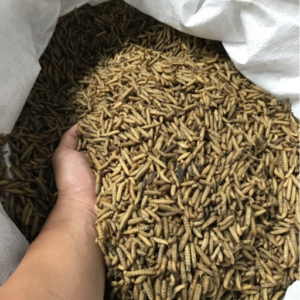
The method used to dehydrate Black Soldier Fly Larvae (BSFL) significantly affects nutrient conservation. Consequently, applications like microwave drying and hot air drying following acid solution pre-treatment, among others, can contribute to preserving essential proteins, lipids, and other nutrients by putting them at minimal high-temperature points and the time required for drying. Nutrient degradation and loss may result from typical drying methods that involve heat exposure over an extended period. Therefore, it is essential to choose the right way of drying so that BSFL would be rich in nutrition even after going through some technological processes, which could make them a source of protein and other valuable elements. Thus, optimizing conditions for dryers improves both efficiency and final product quality.
Effects of Drying Methods on Crude Protein
The effect of different drying modes on the total content of crude protein in Black Soldier Fly Larvae (BSFL) is vital and well worth examining. Research has shown that freeze-drying and vacuum drying are particularly effective preservation methods for crude proteins because these techniques employ low temperatures and reduced pressure, reducing the risk of heat-induced protein denaturation. Conversely, high temperature-dependent drying methods, such as ordinary hot air drying, may cause significant losses in protein content due to the hydrolysis of amino acids and changes in the structure of the proteins. Therefore, care must be taken to select an appropriate drying method to preserve protein integrity and ensure that it remains a potent nutritional resource for larvae culture. Optimizing drying conditions can result in retaining a more significant fraction of crude protein, enhancing the final product’s nutritional value.
Impact of Drying Time on Nutritional Value
The nutritional value of Black Soldier Fly Larvae (BSFL) is profoundly influenced by the time taken for drying, particularly about how many essential nutrients are retained and the overall quality of these flies. To prevent loss of nutrients, optimal drying times are critical; exposure to extreme heat over a long duration degrades vitamins, amino acids, and fats. Different researches show that shorter drying times can enhance the retention of moisture content and nutrient levels, thus improving food quality. However, excessive drying periods cause oxidative damage, reducing nutrition profiles. Therefore, we must strike a balance where drying days are minimized to ensure maximum bioavailability of nutrients in BSFL so that they continue to be good sources of protein and essential fatty acids. Constant monitoring and adjustments made to the dry effect would lead to larvae meeting nutritional requirements and improving their general quality as an eatable source.
Comparative Analysis of Different Drying Processes
A number of methods are commonly used to dry Black Soldier Fly Larvae (BSFL), each with its own pros and cons. The three major drying methods are sun drying, freeze drying, and hot air drying.
- Sun Drying: Sun Drying is an indigenous process that is environmentally friendly and cheap because it uses sunlight’s energy to remove moisture. However, this approach requires favorable weather conditions, exhibits variable outcomes, and exposes the flies to diseases such as bacteria or other predators.
- Freeze Drying: In freezing, larvae are exposed to below-zero temperatures while the pressure drops so that ice evaporates into a gas without forming a liquid at any point. In addition, with freeze-drying, all all-natural substances such as enzymes and vitamins retain their viability better than in alternative food preservation procedures. Nonetheless, it consumes too much energy and needs costly equipment, making it unfit for mass production.
- Hot Air Drying: Here, moist air surrounding the larvae is heated up by means of a convective flow technique. It offers a balance between cost-effectiveness and efficiency, thus being popular among commercial manufacturers. Nevertheless, if not carefully controlled, enhanced temperatures may result in nutrient degradation, which underscores the importance of maintaining accurate control over the process parameters in question.
In summary, every drying method has strengths and weaknesses; hence, a choice might be made based on scale, price, and the nutritional quality required in the end product. Optimization techniques can maintain the BSFL value for a proteinous food supply with essential elements intact.
What Factors Should Be Considered During the Drying Process?
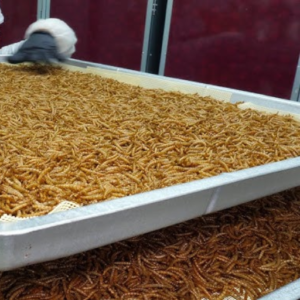
Several things are crucial when considering the drying of black soldier fly larvae (BSFL) due to the best quality and efficiency. Initially, it is essential to determine the moisture content of larvae before drying since higher initial moisture levels may need a longer drying duration. Secondly, the temperature applied during drying is significant, whereby nutrient degradation can occur at high temperatures, whereas low temperatures may not remove water efficiently. Furthermore, higher humidity slows down the drying process. Besides that, airflow must be good enough for the removal of moisture, thereby preventing spoilage from taking place. Finally, executives should closely monitor the time taken to dry to prevent over-drying, which negatively destroys the texture and nutritional quality of these products. A balance has to be struck among these things for a final product with quality attributes to come up.
Temperature and Drying Chamber Specifications
If one wants to dry black soldier fly larvae (BSFL) optimally, several guidelines must be considered.
- Temperature Range: It has been noted that for optimal preservation of nutritional quality with moisture removal, drying temperatures should be kept between 50°C and 70°C or 122°F and 158°F. Any temperature above 70°C must not be used for nutrient degradation prevention.
- Humidity Control: Ideally, humidity levels should be maintained below 60% by dehumidifying systems in the drying chamber to help effectively remove moisture without causing spoilage.
- Airflow Management: The drying chamber ought to allow for a constant and sufficient inflow of air, which is essential in removing moisture. Ventilation systems should be included so air movement within the drying chamber becomes even.
Following these specifications can only yield optimal results, as they ensure efficiency during this process and the retention of BSFL’s nutritional content.
Food Safety Concerns and Standards
Preventing contamination and ensuring nutritional quality is essential in food safety during Black Soldier Fly Larvae (BSFL) processing. The three main concerns or issues are as follows:
- Pathogen Control: Stricter hygiene measures need to be implemented so that no microbial contamination occurs in breeding and drying. Regular training mechanisms and sanitation protocols are essential to handle these pathogens better.
- Chemical Hazards: Materials used in drying must meet food-grade specifications to avoid chemical contamination. To safeguard against pesticides and other contaminants whose levels are deemed safe by regulatory agencies such as the FDA, it is advisable to follow regulations set by these governing bodies.
- Traceability and Labelling: Ensuring safety is established throughout all larvae processed requires traceability within the supply chain. Proper labeling enables consumers to make wise decisions by informing them about processing methods, ingredients used, and certifications related to food safety standards.
To improve BSFL products’ acceptability and safety through dealing with these food safety issues, manufacturers should also consider adherence to relevant norms amidst market forces.
Utilization of Black Soldier Fly Larvae Based on In Vitro Assays
The nutritional and functional characteristics of the black soldier fly (BSFL) larvae can be tested by in vitro assays. Recent research has shown that BSFL can be used effectively in animal feed and aquaculture as a protein source. For instance, these insects have a high percentage of digestibility and bioavailability of nutrients, leading to improved growth rates among animals reared for meat. In addition, there is evidence from in vitro experiments that they could promote diversity among gut microbiota, resulting in good health in all animals. Moreover, BSFL shows an advantageous fatty acid profile with beneficial omega-3 and omega-6 fatty acids, enhancing feeds’ nutritious value. Hence, this highlights the need to further examine possibilities regarding BSFL through properly conducted–in-vitro studies to guide practices and optimize their applications across different sectors.
How to Optimize Dried Black Soldier Fly Larvae for Animal Feed
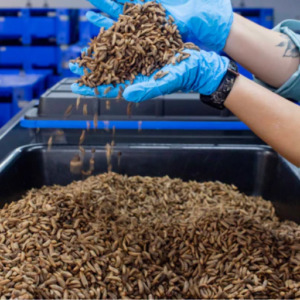
Optimizing dried larvae from black soldier flies for animal feed will require some key strategies. First, the drying process must retain maximum nutritional value by using low-temperature drying methods that can preserve proteins and essential fatty acids. Adding BSFL at the right levels into feed formulation, usually between 10% and 30%, is essential in achieving a balanced nutrient profile and increasing palatability.
It is vital to regularly carry out larval nutritional analysis to adjust the feed formula, which is influenced by varying nutrient composition among batches of BSFL. Supplementing other feed ingredients, such as grains or legumes, with BSFL can improve the overall nutritional quality of feeds, enhancing livestock performance. Lastly, implementing quality control measures throughout production would ensure consistent output, increasing acceptance within animal feed markets.
Enhancing Nutrient Utilization of Black Soldier Fly Larvae
The use of current best practices can lead to nutritional improvement in the black soldier fly larvae (BSFL). To do this, feed formulation for BSFL must be designed targeting specific nutrient profiles so that it contains a reasonable amount of protein, fat, and micronutrients derived from pulses, cereals, and other protein sources. Then, prebiotic and probiotic administration can optimize gut health, thereby improving nutrient availability from feeds with BSFL. Additionally, fermented feed can help to break down anti-nutritional factors and improve acceptability. Finally, appropriate storage techniques that prevent loss in nutritional value and regular analysis of the composition of the insects will ensure that they consistently meet dietary requirements for their target animal species. This multi-dimensional approach will effectively increase overall nutrient use from BSFL in animal feed.
Improving Digestibility in Animal Feed
Animal feed digestibility can be improved in various ways. Several scientific studies have shown that adding enzymes, like cellulases and amylases, can enhance the breakdown of complex carbohydrates, leading to better nutrient absorption. Also, fermentation methods may increase digestion, usually introducing favorable microbes that break down fibrous ingredients into smaller pieces. Moreover, the physical processing of feed, such as grinding or pelleting, can also enhance palatable feed and increase nutrient availability through pelleting. Lastly, it is vital to incorporate proteins of high quality and essential amino acids that optimize growth rates and overall livestock performance. The result was a higher feed efficiency, improving animal health and productivity.
Innovative Uses as a Feed Ingredient
Lately, alternative feed ingredient exploration has gained popularity, especially with increased concern for sustainability in animal agriculture. One of these unique solutions is using insects, mainly black soldier fly larvae (BSFL), as a protein source in animal feed. In addition to being protein- and essential fatty acid-rich, BSFL can be reabsorbed into organic waste, which helps reduce waste in agricultural systems. Moreover, seaweeds have become another interesting feed ingredient lately due to their high nutritional value and potential role in enhancing gut health and immune response among livestock. Substitute vegetable matter proteins derived from legumes and pulses are also included more frequently in animal diets, providing a sustainable alternative to conventional feed sources. They are both beneficial to animals’ health and well-being, as well as global development objectives on sustainability.
Frequently Asked Questions (FAQs)
Q: What are the standard methods for drying black soldier fly larvae (BSFL)?
A: Common methods for drying BSFL include oven drying, hot-air drying, freeze drying, and microwave drying. Each method has its pros and cons regarding nutrient retention and processing efficiency.
Q: How does freeze-drying BSFL compare with microwave-drying or hot-air-drying?
A: Freeze drying generally retains more nutrients and results in lower moisture content than microwave-dried or hot-air-dried methods. However, it is more energy-intensive and costly.
Q: Why is black soldier fly larvae (BSFL) considered a good source of protein for animal feeds?
A: BSFL is rich in protein, essential amino acids, and other nutrients, making it an excellent source of protein for animal feeds, including aquaculture, poultry, and reptile diets.
Q: What precautions should be taken during the drying process of Hermetia illucens to ensure high nutritional value?
A: To prevent nutrient loss, it’s essential to control the temperature and duration of drying. Using a citric acid solution before hot-air drying can also help preserve nutritional content.
Q: Can BSFL be used as a treat for chickens?
A: BSFL can be used as a nutritious treat for chickens, providing them with high-quality protein and other essential nutrients.
Q: How does the moisture content affect the quality of black soldier fly larva meals?
A: Moisture content significantly impacts the quality and shelf-life of black soldier fly larva meals. Lower moisture content enhances shelf life and nutrient stability.
Q: What is the role of black soldier fly larvae in reducing food waste?
A: BSFL can efficiently convert food waste into high-value protein and fat, making them a sustainable option for waste management and nutrient recycling.
Q: How do different drying methods impact the nutrient digestibility of BSFL in animal feeds?
A: Different drying methods affect nutrient digestibility and the disappearance of the vitro total tract differently. Choosing the appropriate method to maximize nutrient availability for the target animal is crucial.
Q: What are the benefits of using BSFL as a feed ingredient in aquaculture?
A: BSFL provides high-quality protein, essential fats, and micronutrients that are beneficial for the growth and health of aquatic species, making it an excellent ingredient in aquaculture feeds.
Q: How can one determine the effects of various processing methods on nutrient utilization in BSFL?
A: The effects can be determined by conducting animal trials and lab analyses to assess nutrient digestibility, retention, and overall animal performance when fed black soldier fly larva meals processed through different methods.













